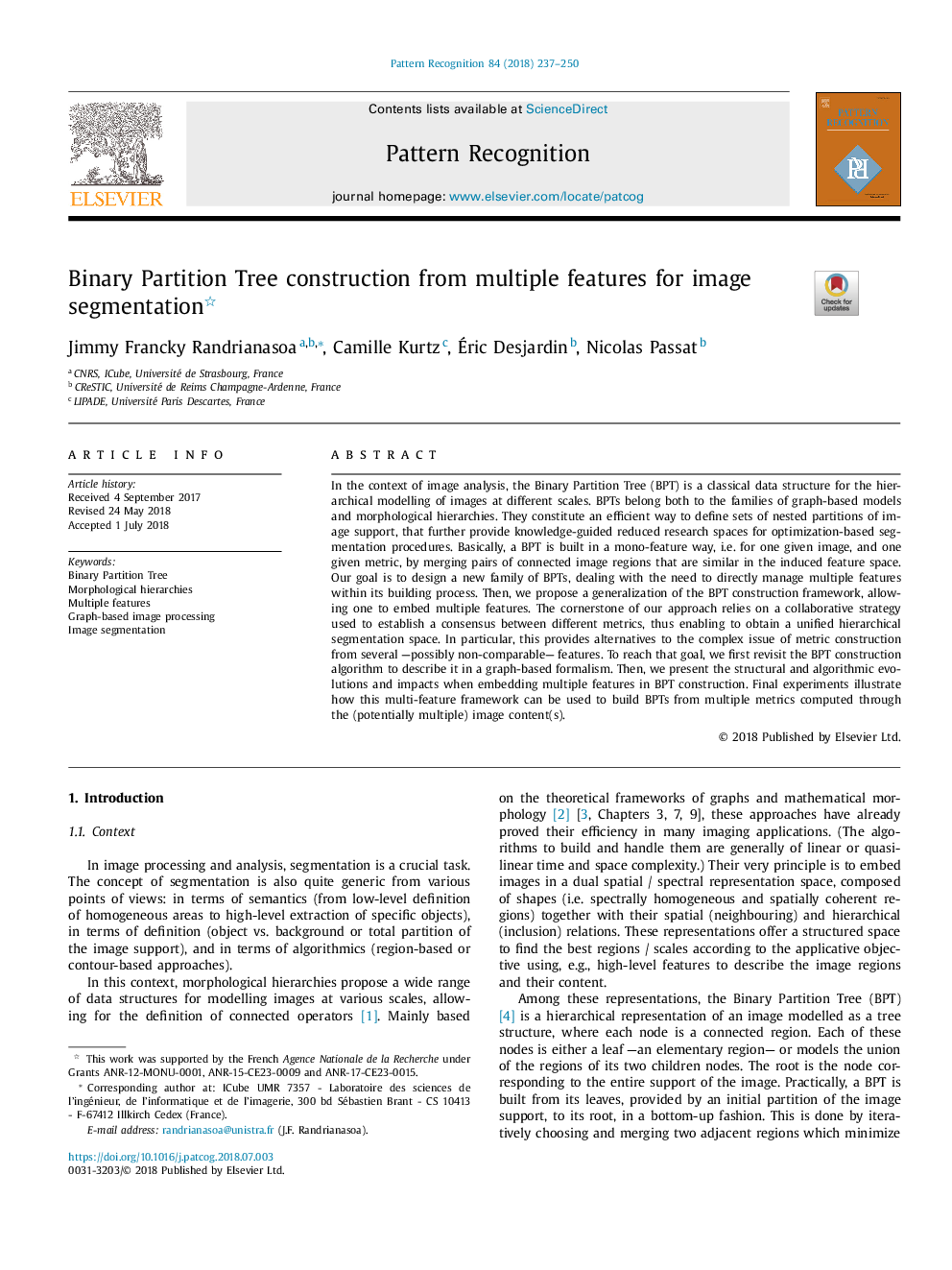| Article ID | Journal | Published Year | Pages | File Type |
|---|---|---|---|---|
| 6938664 | Pattern Recognition | 2018 | 14 Pages |
Abstract
In the context of image analysis, the Binary Partition Tree (BPT) is a classical data structure for the hierarchical modelling of images at different scales. BPTs belong both to the families of graph-based models and morphological hierarchies. They constitute an efficient way to define sets of nested partitions of image support, that further provide knowledge-guided reduced research spaces for optimization-based segmentation procedures. Basically, a BPT is built in a mono-feature way, i.e. for one given image, and one given metric, by merging pairs of connected image regions that are similar in the induced feature space. Our goal is to design a new family of BPTs, dealing with the need to directly manage multiple features within its building process. Then, we propose a generalization of the BPT construction framework, allowing one to embed multiple features. The cornerstone of our approach relies on a collaborative strategy used to establish a consensus between different metrics, thus enabling to obtain a unified hierarchical segmentation space. In particular, this provides alternatives to the complex issue of metric construction from several -possibly non-comparable- features. To reach that goal, we first revisit the BPT construction algorithm to describe it in a graph-based formalism. Then, we present the structural and algorithmic evolutions and impacts when embedding multiple features in BPT construction. Final experiments illustrate how this multi-feature framework can be used to build BPTs from multiple metrics computed through the (potentially multiple) image content(s).
Related Topics
Physical Sciences and Engineering
Computer Science
Computer Vision and Pattern Recognition
Authors
Jimmy Francky Randrianasoa, Camille Kurtz, Ãric Desjardin, Nicolas Passat,
